Mega888 Online Casino Malaysia Duitnow Slot Ewallet Casino TNG
Selamat datang ke Mega888, platform kasino dalam talian yang semakin popular di Malaysia. Mega888 menawarkan pengalaman kasino dalam talian yang menakjubkan. Kami akan jelajahi keistimewaan Mega888, termasuk penggunaan e-wallet TNG dan sistem pembayaran DuitNow.
Mega888 adalah pilihan utama pemain kasino dalam talian di Malaysia. Ia menawarkan kepelbagaian permainan dan kemudahan serta keselamatan transaksi. Dengan e-wallet TNG dan sistem DuitNow, transaksi deposit dan pengeluaran menjadi lebih cepat dan selamat.
Kami akan memberi panduan lengkap tentang mendaftar dan menggunakan DuitNow. Anda juga akan belajar mengurus e-wallet TNG dan menikmati permainan slot terbaik. Kami akan berkongsi tips untuk meningkatkan peluang kemenangan anda. Siap untuk menjelajahi dunia kasino dalam talian ini?
Intisari Utama
- Mega888 adalah platform kasino dalam talian terkemuka di Malaysia
- Menggunakan e-wallet TNG dan sistem pembayaran DuitNow untuk deposit dan pengeluaran yang mudah dan selamat
- Menawarkan pelbagai permainan slot dan kasino langsung yang menarik
- Mempunyai ciri-ciri keselamatan yang ketat untuk melindungi akaun pengguna
- Terdapat pelbagai bonus dan promosi menarik untuk para pemain
Pengenalan Kepada Platform Mega888 Malaysia
Mega888 adalah platform kasino dalam talian yang sangat popular di Malaysia. Ia mula beroperasi di Malaysia sejak tahun 2015. Sekarang, Mega888 menjadi pilihan utama bagi banyak pemain judi di Malaysia, Singapura, dan Thailand.
Sejarah Mega888 di Malaysia
Mega888 mula beroperasi di Malaysia pada tahun 2015. Dari awal, ia sudah menjadi salah satu platform permainan dalam talian yang paling disegani. Syarikat ini kini memegang lebih daripada 90% bahagian pasaran di Malaysia.
Ciri-ciri Utama Platform
- Menawarkan pelbagai jenis permainan termasuk slot, kasino langsung, dan perjudian sukan.
- Menyediakan antara muka pengguna yang mudah digunakan dan mesra.
- Mempunyai pilihan pembayaran yang fleksibel termasuk e-wallet, kad kredit, dan pemindahan bank.
- Sentiasa mengeluarkan permainan dan promosi baharu untuk mengekalkan pengalaman yang segar bagi para pemain.
Lesen dan Keselamatan
Mega888 beroperasi di bawah lesen yang sah. Ia mengikuti piawaian keselamatan industri yang tinggi untuk melindungi maklumat dan dana pengguna. Teknologi enkripsi canggih digunakan untuk memastikan setiap transaksi kewangan dan maklumat peribadi berada dalam keadaan selamat.
| Statistik Penting |
Angka |
| Bahagian Pasaran Mega888 di Malaysia |
Melebihi 90% |
| Pemain dari Malaysia, Singapura, dan Thailand |
80% |
| Jumlah Muat Turun Aplikasi Mega888 |
Lebih 1 juta |
Mega888 telah membuktikan dirinya sebagai platform kasino dalam talian yang boleh dipercayai dan berprestij di Malaysia. Dengan sejarah yang kukuh, ciri-ciri menarik, dan langkah-langkah keselamatan yang komprehensif, ia menjadi pilihan utama bagi peminat judi atas talian di rantau ini.
Cara Mendaftar Akaun Mega888
Bagi pemain yang ingin menikmati pengalaman akaun kasino dalam talian yang seru, pendaftaran Mega888 sangat mudah. Anda hanya perlu mengikuti beberapa langkah mudah untuk buat akaun di Mega888, yang sangat popular di Malaysia:
- Lawati laman web rasmi Mega888 dan klik butang "Daftar" di atas skrin.
- Isikan maklumat peribadi seperti nama, nombor telefon, alamat e-mel, dan nombor kad pengenalan.
- Pilih mata wang untuk akaun anda - Ringgit Malaysia (RM) atau Dolar Singapura (SGD).
- Cipta kata laluan yang selamat dan mudah diingat untuk melindungi akaun anda.
- Baca dan bersetuju dengan terma dan syarat Mega888.
- Selesaikan pengesahan akaun dengan menghantar salinan dokumen pengenalan diri yang sah.
- Setelah pendaftaran berjaya, anda boleh mula main permainan slot dan kasino menarik di Mega888.
Dengan mengikuti langkah mudah ini, anda akan dapat menikmati pengalaman bermain yang selamat dan menyeronokkan di akaun kasino dalam talian Mega888. Ingatlah untuk selalu menjaga keselamatan akaun anda untuk pengalaman terbaik!
| Statistik Mega888 |
Nilai |
| Bahagian Pasaran Permainan Slot di Malaysia |
Lebih 90% |
| Pemain dari Malaysia, Singapura, dan Thailand |
80% |
| Jumlah Muat Turun Aplikasi Mega888 |
Lebih 1 Juta |
Mega888 telah menjadi pemimpin industri perjudian dalam talian di Malaysia. Mereka menawarkan banyak permainan slot dan kasino yang menarik dengan bonus dan jackpot yang menggoda.
Sistem Pembayaran DuitNow di Mega888
Mega888 adalah platform kasino dalam talian yang popular di Malaysia. Mereka menawarkan pelbagai pilihan pembayaran untuk pengguna. DuitNow adalah salah satu kaedah pembayaran yang ditawarkan, memudahkan transaksi pembayaran dalam talian dan transaksi kasino.
Kelebihan Menggunakan DuitNow
Penggunaan DuitNow di Mega888 memberikan beberapa kelebihan:
- Proses transaksi yang pantas dan selamat
- Tiada bayaran tambahan atau yuran tersembunyi
- Integrasi yang lancar dengan sistem Mega888
- Kebolehpercayaan dan reputasi DuitNow sebagai platform pembayaran dalam talian
Langkah-langkah Transaksi DuitNow
Ini adalah langkah mudah untuk transaksi menggunakan DuitNow di Mega888:
- Log masuk ke akaun Mega888 anda
- Navigasi ke halaman deposit dan pilih DuitNow sebagai kaedah pembayaran
- Masukkan jumlah deposit yang dikehendaki
- Pilih bank anda dan log masuk ke akaun bank anda untuk mengesahkan transaksi
- Transaksi anda akan diproses dengan segera dan baki anda akan dikemaskini di Mega888
Dengan menggunakan DuitNow, pemain Mega888 dapat menikmati pengalaman pembayaran yang lancar. Ini memudahkan aktiviti transaksi kasino mereka.
slot ewallet mega888 TNG
Bagi peminat kasino dalam talian, menggunakan e-wallet untuk bermain slot di Mega888 sangat popular. Anda boleh menyambungkan akaun e-wallet Touch 'n Go (TNG) anda. Ini membolehkan anda menikmati keselesaan dan keselamatan pembayaran mudah alih semasa bermain slot Mega888.
Kelebihan menggunakan e-wallet TNG untuk slot Mega888 adalah:
- Transaksi yang pantas dan mudah
- Keselamatan terjamin dengan teknologi enkripsi
- Tiada had deposit minimum yang tinggi
- Pemantauan transaksi yang lebih baik
Untuk mula menggunakan TNG di Mega888, ikuti langkah-langkah berikut:
- Daftar dan pasangkan akaun TNG anda dengan akaun Mega888 anda.
- Pilih TNG sebagai kaedah pembayaran semasa membuat deposit.
- Masukkan jumlah deposit dan sahkan transaksi melalui aplikasi TNG.
- Dana akan terus dimasukkan ke dalam akaun Mega888 anda.
Dengan kemudahan e-wallet TNG, pengalaman bermain slot Mega888 anda akan lebih lancar dan selamat. Jangan tunggu lagi! Daftarkan akaun TNG anda sekarang dan mulakan bertaruh di platform Mega888 yang terpercaya.
Permainan Popular di Mega888
Mega888 adalah platform kasino dalam talian yang semakin popular di Malaysia. Ia menawarkan pelbagai permainan slot dan kasino langsung yang menarik. Pemain Mega888 suka bermain permainan slot popular seperti 918Kiss dan Kiss918.
Kasino langsung juga menjadi tarikan utama. Pelbagai pilihan seperti roulette, blackjack, dan baccarat tersedia.
Slot Games Terbaik
Mega888 menawarkan pelbagai permainan Mega888 yang menarik. Anda boleh menemui tema yang pelbagai dan peluang untuk meraih jackpot besar. Berikut adalah beberapa slot terpopular yang boleh anda cuba:
- Mega Moolah
- Gladiator
- Aztec Gems
- Dragons of the North
- Cleopatra
Live Casino Games
Bagi peminat kasino langsung, Mega888 mempunyai pilihan menarik. Anda boleh menikmati:
- Roulette
- Blackjack
- Baccarat
- Sic Bo
- Dragon Tiger
Dengan pelbagai pilihan permainan slot dan kasino langsung, Mega888 menawarkan pengalaman bermain yang menyeronokkan. Pemain di Malaysia pasti akan menikmati.
Panduan Deposit Menggunakan E-wallet
Untuk menikmati kasino dalam talian di Mega888, kaedah deposit penting. E-wallet semakin popular kerana mudah dan selamat. Kami akan tunjukkan cara deposit menggunakan e-wallet di Mega888.
Kelebihan Menggunakan E-wallet untuk Deposit
- Mudah dan cepat - Deposit dengan Touch 'n Go, GrabPay, dan Boost sangat ringkas.
- Keselamatan tinggi - E-wallet melindungi maklumat kewangan anda.
- Kawalan deposit - Anda boleh pantau deposit anda dengan mudah.
Langkah-langkah Deposit Menggunakan E-wallet
- Log masuk ke akaun Mega888 anda.
- Pergi ke "Deposit" di laman atau aplikasi Mega888.
- Pilih e-wallet seperti Touch 'n Go, GrabPay, atau Boost.
- Masukkan jumlah deposit yang dikehendaki.
- Ikut arahan untuk menyelesaikan deposit di aplikasi e-wallet.
- Log masuk ke aplikasi e-wallet dan sahkan transaksi.
- Dana akan masuk ke akaun Mega888 anda segera.
Dengan mengikuti langkah mudah ini, deposit ke Mega888 anda akan cepat dan selamat. Ini memastikan pengalaman bermain yang lancar dan selamat.
Keselamatan Transaksi di Mega888
Di Mega888, keselamatan kasino dalam talian sangat penting. Mereka mempunyai langkah keselamatan yang lengkap untuk melindungi pengguna. Ini termasuk melindungi dari aktiviti yang tidak sah.
Teknologi Enkripsi
Mega888 menggunakan enkripsi data canggih untuk melindungi transaksi kewangan. Data sensitif seperti maklumat kad kredit dan perbankan disulitkan dengan algoritma tinggi. Ini untuk memastikan keselamatan maksimum.
Sistem Verifikasi
Mega888 juga mempunyai sistem verifikasi pengguna yang ketat. Mereka memerlukan pengesahan identiti melalui pelbagai langkah. Ini termasuk pengesahan dua faktor untuk memastikan hanya pemilik akaun sah yang boleh mengakses dan melakukan transaksi.
Dengan teknologi enkripsi dan sistem verifikasi yang kuat, Mega888 mencipta persekitaran bermain yang selamat. Ini untuk semua pengguna di Malaysia.
Bonus dan Promosi Mega888
Di Mega888, pemain dapat menikmati banyak bonus dan promosi menarik. Ini memberikan nilai tambah kepada pengalaman mereka berjudi online. Dari bonus selamat datang yang menggoda hingga promosi musim yang mengujakan, Mega888 sentiasa memberi peluang kepada pemain untuk mendapatkan lebih banyak ganjaran.
Bonus Selamat Datang adalah tawaran khas untuk pemain baru. Bonus ini boleh digunakan untuk bermain pelbagai jenis permainan seperti slot dan kasino langsung. Ini memberikan pemain peluang untuk memulakan pengalaman perjudian mereka dengan lebih baik.
Bonus Deposit diberikan apabila pemain membuat deposit ke dalam akaun mereka. Jumlah bonus yang diberikan bergantung kepada jumlah deposit yang dibuat. Ini memberikan insentif kepada pemain untuk terus bermain dan meningkatkan deposit mereka.
| Jenis Bonus |
Perincian |
Syarat Tuntutan |
| Bonus Selamat Datang |
Bonus sehingga RM1,000 untuk pemain baru |
Daftar akaun baru dan buat deposit pertama |
| Bonus Deposit |
Bonus sehingga 150% daripada jumlah deposit |
Buat deposit ke dalam akaun dan penuhi syarat taruhan |
| Promosi Bermusim |
Bonus dan ganjaran istimewa seperti Birthday Month Bonus |
Ikuti syarat dan tempoh promosi yang ditetapkan |
Mega888 juga sering menjalankan promosi bermusim. Ini memberikan peluang kepada pemain untuk mendapatkan bonus dan ganjaran istimewa. Contohnya, promosi Birthday Month Bonus memberikan bonus tambahan pada bulan ulang tahun pemain.
Dengan pelbagai bonus kasino dan promosi Mega888, pemain boleh memanfaatkan tawaran khas ini. Ini meningkatkan peluang mereka untuk menang dan menikmati pengalaman perjudian yang lebih menguntungkan.
Panduan Bermain Slot Online
Bermain slot di Mega888 boleh sangat menyeronok dan menguntungkan. Namun, anda perlu strategi dan pengurusan modal yang baik. Ikuti panduan ini untuk meningkatkan peluang menang anda.
Tips Menang
Anda boleh meningkatkan peluang menang dengan mengikuti beberapa tips ini:
- Pelajari ciri-ciri permainan dan mekanisme pembayaran.
- Gunakan bonus dan promosi untuk tambah modal.
- Tetapkan had pertaruhan dan ikut disiplin.
- Jangan main tanpa strategi, main dengan bijak.
- Pilih permainan dengan RTP tinggi.
Strategi Pengurusan Modal
Pengurusan modal yang baik sangat penting untuk menang. Berikut adalah beberapa strategi yang boleh anda gunakan:
- Tentukan had deposit dan pertaruhan yang sesuai dengan kemampuan kewangan anda.
- Gunakan teknik 'bankroll management' untuk bahagikan modal ke beberapa sesi permainan.
- Elak risiko yang terlalu tinggi dengan tidak meningkatkan pertaruhan melebihi kemampuan anda.
- Belajar dari setiap pengalaman dan sesuaikan strategi anda jika perlu.
- Main dengan hati-hati dan bertanggungjawab untuk pengalaman yang seronok dan menguntungkan.
Dengan menerapkan strategi slot, tips menang, dan pengurusan wang yang betul, anda boleh meningkatkan peluang menang. Ingatlah untuk main dengan hati-hati dan bertanggungjawab.
Aplikasi Mega888 Mobile
Dunia aplikasi kasino mudah alih kini berkembang pesat. Mega888 mobile adalah salah satu platform terkemuka di Malaysia. Ia menawarkan banyak permainan dalam talian yang menarik dan menyeronokkan.
Para pemain boleh menikmati pengalaman kasino yang luar biasa hanya dengan menggunakan peranti mudah alih mereka.
Bagi mereka yang ingin mencoba Mega888 di mana sahaja dan bila-bila masa, aplikasi mudah alih Mega888 adalah pilihan yang ideal. Aplikasi ini boleh dimuat turun dengan mudah dan cepat. Anda boleh mendapatkannya dari Google Play Store atau App Store.
Ini memberikan akses lancar ke banyak permainan slot, kasino langsung, dan lain-lain.
Ciri-ciri Utama Aplikasi Mega888 Mobile
- Antara muka pengguna yang intuitif dan mesra pengguna
- Akses kepada semua permainan popular Mega888, termasuk permainan slot, kasino langsung, dan banyak lagi
- Proses log masuk dan daftar yang selamat dan mudah
- Kemampuan untuk melakukan deposit dan pengeluaran dengan cepat dan selamat melalui pelbagai kaedah pembayaran, termasuk ewallet seperti Touch 'n Go, Boost, dan GrabPay
- Notifikasi real-time mengenai promosi, bonus, dan acara terbaru
- Sokongan pelanggan 24/7 yang bersedia membantu dengan sebarang pertanyaan atau masalah
Aplikasi mudah alih Mega888 menawarkan ciri-ciri yang komprehensif dan pengalaman yang lancar. Ini menjadikannya pilihan unggul bagi peminat permainan dalam talian di Malaysia. Anda boleh menikmati kemudahan dan keseronokan aplikasi kasino mudah alih Mega888 di mana saja dan bila-bila masa.
Perbandingan E-wallet di Mega888
Mega888 adalah platform kasino dalam talian terkemuka di Malaysia. Ia menawarkan pelbagai pilihan e-wallet untuk pembayaran. Tiga e-wallet utama adalah Touch 'n Go, GrabPay, dan Boost. Setiap e-wallet mempunyai kelebihan dan kekurangan yang berbeza.
Touch 'n Go
Touch 'n Go adalah e-wallet paling popular di Malaysia. Ia digunakan banyak di Mega888. Ia menawarkan had transaksi tinggi dan proses pembayaran yang cepat.
Pengguna perlu pastikan akaun Touch 'n Go mereka mempunyai baki yang cukup. Ini penting sebelum deposit ke Mega888.
GrabPay
GrabPay semakin popular di kalangan pemain Mega888. Ia menawarkan pengalaman pembayaran yang mudah dan cepat. Had transaksi GrabPay juga fleksibel.
Pemain perlu berhati-hati dengan yuran tambahan GrabPay. Ini mungkin dikenakan untuk sesetengah transaksi.
Boost
Boost adalah e-wallet lain yang diterima di Mega888. Ia mempunyai proses transaksi yang cepat dan had yang munasabah. Namun, kurang popular berbanding Touch 'n Go dan GrabPay.
Pemain mungkin menghadapi cabaran dalam menggunakan Boost di Mega888.
| Ciri-Ciri |
Touch 'n Go |
GrabPay |
Boost |
| Had Transaksi |
Tinggi |
Fleksibel |
Munasabah |
| Kelajuan Pemprosesan |
Pantas |
Pantas |
Pantas |
| Keselamatan |
Baik |
Baik |
Baik |
| Populariti di Mega888 |
Tinggi |
Sederhana |
Rendah |
Ketiga e-wallet ini menawarkan pengalaman pembayaran yang baik di Mega888. Pemain perlu mempertimbangkan kelebihan dan kekurangan setiap e-wallet. Ini penting untuk memilih pilihan terbaik.
Sokongan Pelanggan 24/7
Di Mega888, kami tahu betapa pentingnya khidmat pelanggan yang cepat. Kami menawarkan sokongan 24 jam setiap hari, 7 hari seminggu. Ini untuk memastikan anda dapat bantuan kapan saja.
Pasukan kami yang berpengalaman siap membantu anda. Mereka akan menjawab pertanyaan atau menyelesaikan masalah anda cepat. Kami ada untuk membantu dengan khidmat pelanggan terbaik, sama ada soalan teknikal atau nasihat.
- Hubungi kami melalui talian telefon 24/7
- Hantar e-mel kepada bantuan Mega888 untuk pertanyaan bertulis
- Layari laman web kami untuk sokongan dalam talian dan Soalan Lazim
Kami ingin anda menikmati pengalaman bermain yang lancar dan menyeronok. Jangan ragu untuk menghubungi kami jika anda butuh bantuan.
| Kaedah Sokongan |
Waktu Operasi |
Tindak Balas Purata |
| Telefon |
24 jam sehari, 7 hari seminggu |
20 saat |
| E-mel |
24 jam sehari, 7 hari seminggu |
6 jam |
| Borang Hubungi dalam talian |
24 jam sehari, 7 hari seminggu |
2 jam |
"Sokongan pelanggan yang cepat dan mesra pengguna adalah keutamaan kami di Mega888."
Tips Keselamatan Akaun
Membina keselamatan akaun dalam talian yang kukuh sangat penting. Ini untuk melindungi data anda di kasino selamat seperti Mega888. Berikut adalah beberapa tips untuk meningkatkan keselamatan akaun anda:
- Pilih kata laluan yang kuat dan unik untuk setiap akaun anda. Jangan gunakan maklumat peribadi yang mudah diteka.
- Aktifkan pengesahan dua faktor untuk tambahan lapisan keselamatan semasa log masuk.
- Waspadalah terhadap e-mel, mesej, atau panggilan telefon yang mencurigakan. Mereka mungkin cuba mendapatkan maklumat sensitif anda.
- Elak menggunakan rangkaian awam yang tidak selamat atau mengakses akaun anda di tempat awam.
- Tetapkan dinyahaktifkan akaun Mega888 anda jika tidak akan digunakan untuk masa yang lama.
Dengan mengikuti langkah-langkah ini, anda dapat meningkatkan perlindungan data. Anda juga dapat menikmati kasino selamat di Mega888 dengan lebih tenang.
Trend Terkini Casino Online Malaysia
Industri perjudian dalam talian di Malaysia mengalami perubahan besar dalam beberapa tahun terakhir. Teknologi baru dan perubahan undang-undang mempengaruhi trend kasino online. Mari kita lihat beberapa trend terkini yang menarik perhatian.
Perkembangan Teknologi
Teknologi canggih menjadi sorotan utama dalam kasino online. Realiti maya (VR) dan blockchain digunakan dalam permainan. Ini membuat pengalaman bermain lebih menarik dan realistik tanpa keluar rumah.
Teknologi enkripsi dan keselamatan data juga berkembang. Ini meningkatkan keamanan transaksi keuangan di platform trend kasino dalam talian. Pemain lebih yakin untuk terlibat dalam teknologi kasino ini.
Perubahan Industri
Industri perjudian Malaysia mengalami perubahan dalam peraturan. Kerajaan memperketat peraturan untuk mengawal perjudian. Ini membantu pertumbuhan trend kasino dalam talian yang sah.
Pemain lebih suka menggunakan e-wallet untuk pembayaran. Ini memberikan lebih banyak pilihan dan keselesaan dalam transaksi online.
Secara keseluruhan, trend kasino dalam talian di Malaysia berkembang pesat. Inovasi teknologi dan perubahan industri memungkinkan pengalaman kasino online yang lebih baik, selamat, dan menarik.
Panduan Pengeluaran Wang
Apabila anda menang di Mega888 di Malaysia, penting untuk tahu cara mengeluarkan wang kemenangan. Mega888 memberikan panduan lengkap untuk memudahkan proses ini.
Langkah-langkah Pengeluaran Wang
- Log masuk ke akaun Mega888 anda.
- Pilih menu "Pengeluaran" atau "Tarik Dana".
- Pilih kaedah pengeluaran yang anda inginkan, seperti e-wallet atau perbankan dalam talian.
- Masukkan jumlah wang yang ingin anda keluarkan.
- Pastikan maklumat akaun bank atau e-wallet anda adalah tepat.
- Ikuti arahan selanjutnya untuk mengesahkan transaksi pengeluaran.
Had Pengeluaran
Mega888 membatasi minimum pengeluaran RM50 dan maksimum RM50,000. Ini untuk memastikan pengeluaran kasino lancar dan proses pembayaran cepat.
Tempoh Pemprosesan
Mega888 memproses wang kemenangan anda dalam satu hari bekerja. Tiada aduan masalah pengeluaran dari pemain kepada khidmat pelanggan Mega888.
| Kaedah Pengeluaran |
Tempoh Pemprosesan |
| E-wallet |
1 hari bekerja |
| Perbankan dalam talian |
1 hari bekerja |
Pemain mungkin perlu tunjuk bukti pengenalan diri. Ini untuk memastikan pengeluaran selamat.
"Mega888 menyediakan proses pengeluaran yang mudah, cepat dan selamat bagi memberikan pengalaman terbaik kepada para pemain."
Kesimpulan
Mega888 adalah pilihan utama di Malaysia untuk kasino dalam talian. Mereka memegang lebih daripada 90% pasaran permainan slot. Lebih dari 80% pemain dari Malaysia, Singapura, dan Thailand memilih Mega888.
Aplikasi Mega888 mudah digunakan dan dimuat turun oleh lebih dari satu juta pengguna. Mereka menawarkan banyak permainan slot, bonus menarik, dan sistem pembayaran e-wallet seperti DuitNow. Ini menjadikan Mega888 pilihan terbaik di Malaysia.
Bagi pemain berpengalaman atau baru, Mega888 adalah platform yang sesuai. Mereka memprioritaskan keselamatan, menawarkan bonus menarik, dan pengalaman bermain yang luar biasa. Ini menjadikan Mega888 pilihan utama untuk menikmati permainan kasino dalam talian dengan bertanggungjawab.
FAQ
Apakah Mega888 dan bagaimana ia beroperasi di Malaysia?
Mega888 adalah platform kasino dalam talian yang popular di Malaysia. Ia menawarkan pelbagai permainan seperti slot, kasino langsung. Sistem pembayaran DuitNow dan sokongan e-wallet TNG menjadikan pengalaman bermain selamat dan menyeronok.
Bagaimana saya boleh mendaftar akaun Mega888?
Proses pendaftaran akaun Mega888 mudah dan selamat. Anda perlu berikan maklumat peribadi dan bukti identiti. Setelah itu, akaun anda akan aktif.
Apakah kelebihan menggunakan DuitNow sebagai kaedah pembayaran di Mega888?
DuitNow memudahkan transaksi di Mega888. Ia cepat, selamat dan mudah digunakan. Kelebihannya termasuk had transaksi tinggi dan pemprosesan yang cekap.
Bagaimana saya boleh menggunakan e-wallet TNG untuk bermain slot di Mega888?
Menggunakan e-wallet TNG di Mega888 mudah. Anda hanya perlu hubungkan akaun TNG dengan Mega888. Kemudian, boleh buat deposit dan pertaruhan dengan e-wallet.
Apakah permainan slot dan kasino langsung yang paling popular di Mega888?
Mega888 menawarkan banyak permainan slot menarik. Juga, permainan kasino langsung seperti roulette, blackjack, dan baccarat popular. Anda boleh pilih permainan yang sesuai dengan gaya anda.
Bagaimana saya boleh membuat deposit di Mega888 menggunakan e-wallet?
Mega888 memudahkan deposit dengan e-wallet seperti TNG, GrabPay, dan Boost. Ikuti langkah mudah untuk hubungkan e-wallet dan buat deposit selamat ke akaun anda.
Bagaimana Mega888 melindungi keselamatan transaksi pengguna?
Mega888 gunakan teknologi enkripsi canggih dan sistem verifikasi. Ini memastikan keselamatan akaun dan transaksi pengguna. Mereka juga ikut piawaian industri untuk perlindungan data.
Apakah bonus dan promosi yang ditawarkan oleh Mega888?
Mega888 tawarkan banyak bonus dan promosi menarik. Termasuk bonus selamat datang, deposit, dan promosi bermusim. Manfaatkan tawaran ini untuk tingkatkan peluang menang.
Bagaimana saya boleh bermain slot online dengan selamat dan berkesan di Mega888?
Mega888 ada panduan lengkap untuk bermain slot online. Termasuk tips untuk menang, strategi pengurusan modal, dan nasihat bertanggungjawab.
Apakah kelebihan menggunakan aplikasi Mega888 berbanding platform web?
Aplikasi Mega888 menawarkan pengalaman permainan yang lebih baik. Ia mudah digunakan, antara muka menarik, dan prestasi tinggi. Ini memberikan pengalaman bermain yang lancar.

Creative, Entrepreneurial, and Global: 21st Century Education
Home » Blogs, China/Chinese, Education Reforms, Globalization
Reading the PISA Tea Leaves: Who Is Responsible for Finland’s Decline and the Asian Magic
2 December 2013
72,648
24 Comments
“Finland Fell from the Tip of PISA,” says the headline of a story in the largest subscription newspaper Helsingin Sanomat in Finland, according to Google Translate (I think it should be
Finland Falls from the Top of PISA). I don’t know Finnish but thanks to Google Translate, I was able to understand most of the story. The gist is that Finland has fallen from the top in the current round of PISA.
This is big news, with significant implications not only for the Finns but also for the rest of the world that has been looking at Finland as the model education system since 2001 when Finland was number one in the first round of PISA. Although results of the 2012 PISA won’t be officially unveiled until 10am GMT, December 3rd. the leaked story, published on November 30th, has already sent the Finns and others to speculate the causes of Finland’s decline. “The reasons are seen in the teachers’ continuing education in poor and outdated teaching methods and technology,” writes the Helsingin Sanomat story (courtesy of Google Translate).
While the Finns are right to be concerned about their education, it would be a huge mistake to believe that their education has gotten worse. Finland’s slip in the PISA ranking has little to do with what Finland has or has not done. It has been pushed down by others. In other words, Finland’s education quality as measured by the PISA may have not changed at all and remains strong, but the introduction of other education systems that are even better at taking tests has made Finland appear worse than it really is. In 2000 and 2003 when Finland was number one, only two East Asian education systems were included: Korea and Japan. In 2009, there were seven from Eastern Asia: Shanghai, Hong Kong, Taiwan, Singapore, South Korea, Japan, and Macao. Six out of the seven ranked top 10 in math, five in science and five in reading and Shanghai took number away from Finland. I have not seen the 2012 results yet and will miss the big moment on my way back to the U.S. from Hong Kong, but I can guess, as the Helsingin Sanomat already suggested, the East Asian education systems did very well again, squeezing further Finland down the league table.
An even bigger mistake is to assume that the Asian systems have made significant improvement and surpassed Finland. The Asian systems have always done extremely well in international tests, especially in math. The top scoring education systems in another major international assessment, the TIMSS, have always been Eastern Asian since 1995: Singapore, S. Korea, Hong Kong, Japan, and Taiwan. Mainland China has yet to participate in TIMSS.
The 2009 PISA results have already begun to shift the world’s attention away from Finland to Shanghai. I fear that the 2012 PISA will complete that shift and make Shanghai and other East Asian education systems THE model of education because the magic potion that East Asian success in international tests is very poisonous.
The recipe for the East Asian success is actually not that magical. It includes all the elements that have been identified as the symptoms of the GERM (Global Education Reform Movement) by the great Finnish education scholar Pasi Sahlberg: Competition, Standardization, Frequent Testing, and Privatization. In East Asian high PISA performing systems, these ingredients are more effectively combined and carried out to an extreme to result in entire societies devoted to ensure that their youngsters become excellent test takers.
While the East Asian systems may enjoy being at the top of international tests, they are not happy at all with the outcomes of their education. They have recognized the damages of their education for a long time and have taken actions to reform their systems. Recently, the Chinese government again issued orders to lesson student academic burden by reducing standardized tests and written homework in primary schools. The Singaporeans have been working reforming its curriculum and examination systems. The Koreans are working on implementing a “free semester” for the secondary students. Eastern Asian parents are willing and working hard to spend their life’s savings finding spots outside these “best” education systems. Thus international schools, schools that follow the less successful Western education model, have been in high demand and continue to grow in East Asia. Tens of thousands of Chinese and Korean parents send their children to study in Australia, the U.K., Canada, and the U.S. It is no exaggeration to say that that the majority of the parents in China would send their children to an American school instead of keeping them in the “best performing” Chinese system, if they had the choice.
The East Asian education systems may have a lot to offer to those who want a compliant and homogenous test takers. For those who are looking for true high quality education, Finland would still be a better place. But for an education that can truly cultivate creative, entrepreneurial and globally competent citizens needed in the 21st century, you will have to invent it. Global benchmarking can only give you the best of the past. For the best of the future, you will have do the invention yourself.
(May append later. Gotta run to the airport)




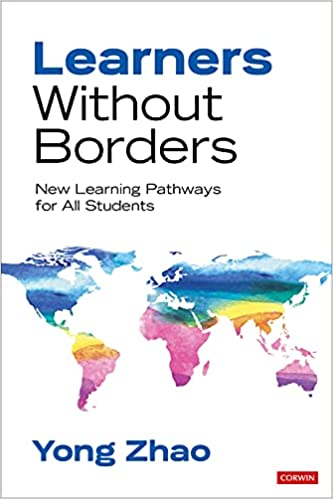




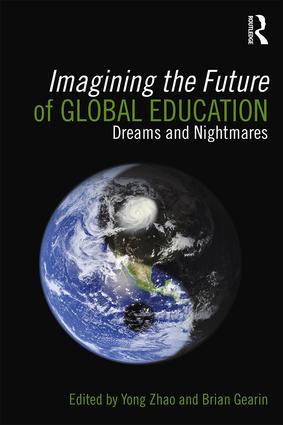
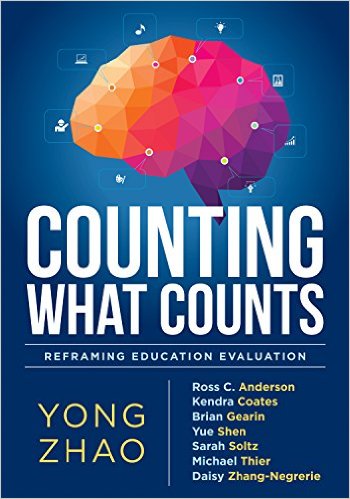


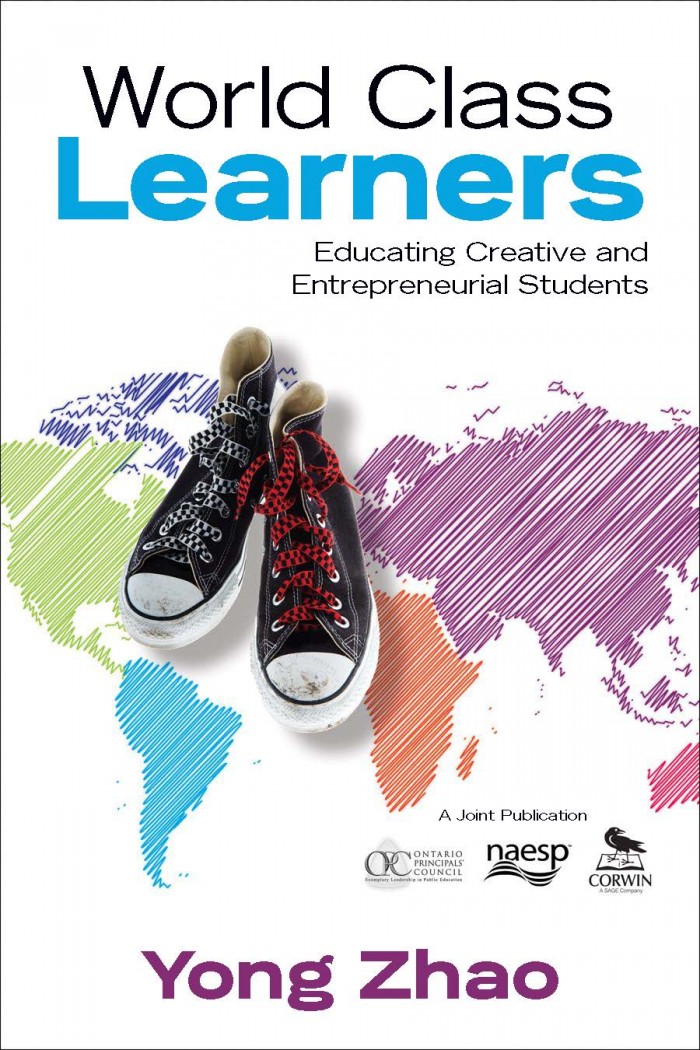


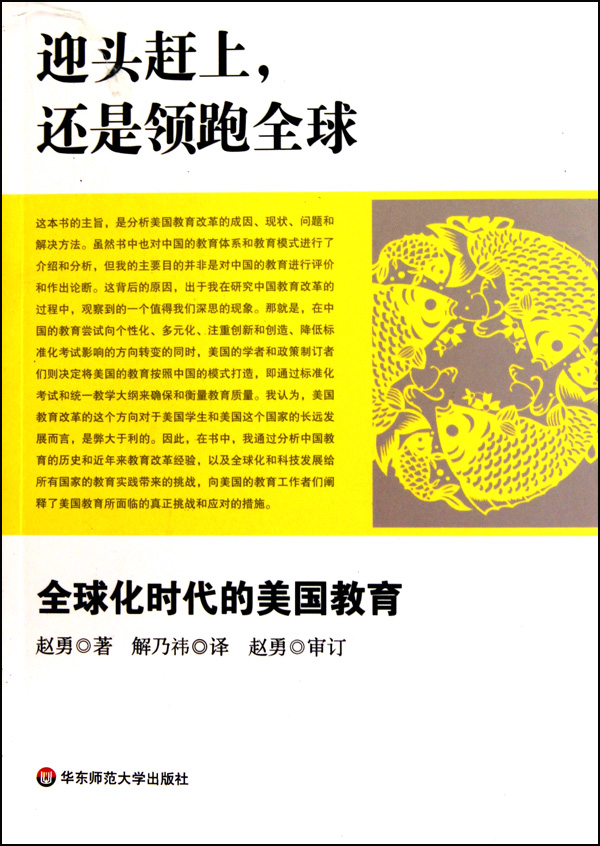










[…] In this post, he reveals some inside information about PISA: Finland has slipped out of the top tier. He says this is not because the quality of education declined in Education in Finland slipped but because so many test-centric Asian nations (and cities) participated. […]
totally agree.
have a safe trip.
[…] waarom we beter niet nu Shangai lessons kopen en waarom we Finnish lessen niet moeten weggooien, check dit artikel. Binnenkort biedt de OESO scholen zelf testen aan waarmee ze zich kunnen vergelijken met de rest […]
I think you will find that the PISA index is based on comparisons between OECD-countries only, and therefore not influenced by the inclusion of Shanghai, Singapore or Hong Kong.
[…] waarom we beter niet nu Shangai lessons kopen en waarom we Finnish lessen niet moeten weggooien, check dit artikel. Binnenkort biedt de OESO scholen zelf testen aan waarmee ze zich kunnen vergelijken met de rest […]
[…] Segons Yong Zhao, Finlàndia no ha empitjorat, sinó que altres (els asiàtics) han millorat molt. Però Pasi Sahlberg té una altra […]
The PISA test results continue to generate debate – is it “a Sputnik” moment or are international comparisons invalid? What’s the critical element – culture, parents, teachers, better instruction?
Readers might enjoy answering one of PISA questions from an earlier test. It offers insights into the demands of higher order thinking. Do American students learn how to sequence (higher order thinking) or simply memorize sequences provide by the teacher?
See my post for the question, answers, and PISA data – “Stop Worrying About Shanghai, What PISA Test Really Tells Us About American Students” http://bit.ly/tPE1YE
In Finland and Sweden we have very similar educational systems. Sweden fell way behind because of bigger number of immigrants.
This comment is not r…ist at all. It’s a fact. Decline proofs unsuccesful “homefication” despite vast amounts of money spent (billions and billions!).
Hello Yong, thanks for your review here … I’m an innovative (25+ year) educator across the border in British Columbia and I know these OECD-PISA scores have become a big deal, and are now widely reported in Canadian media. I’ve just seen our national newspaper (Globe and Mail) calling for BC to reject the (pending) new ‘BCEd Plan’ calling for a more personalized approach, because of these PISA test scores. Of course the writer – senior editor Jeffrey Simpson – made no attempt to truly investigate the subject of this or any kind of standardized testing – because that would have just gotten in the way of his biases. Ugh.
Anyways, I’m a longtime advocate of personalized learning and much less standardized schooling, and I really enjoyed your new book, and am sharing with my colleagues in “SelfDesign Learning Community” – a government-supported BC independent school that is a leader in Personalized Learning. I know you’d be interested in seeing and knowing what we’re up to.
– Michael Maser
[…] Does this mean that the Finns have been wrong all the time? Not according to US education academic Yong Zhao ( a visitor to New Zealand earlier this […]
Ben,
The explanation can’t only be the number of immigrants, because 1) the kids of non-native background score better in FInland than in Sweden and 2) this holds even in immigrant dominated classes.
You can actually browse the data on http://nces.ed.gov/surveys/international/ide/
[…] Yong Zhao ; Diane Ravitch ; The Atlantic ; Quartz ; Joe Bower (he has a few posts on this) Share this:TwitterFacebookGoogleLike this:Like Loading… […]
[…] much attention is given to the ranking part of the tests, as Yong Zhao points out, even those at the top are wondering about their success: While the East Asian systems […]
[…] average was 501. In reading, the average score of US students was 498; the OECD average was 496. University of Oregon professor Yong Zhao weighs in (well, lots of folks did, but I’ll just link to […]
[…] average was 501. In reading, the average score of US students was 498; the OECD average was 496. University of Oregon professor Yong Zhao weighs in (well, lots of folks did, but I’ll just link to […]
Once again Yong has astutely pointed to the limitations of simplified thinking & policy about test taking. I hope the Finns will be able to avoid a media driven overreaction.
One explanation to Finland’s results can be that the test sample was not not entirely random, but the test pupils were selected from those schools where immigrant pupils are relatively abundant, to get a represantive sample of the immigrants. Sure this could also be a way to exclude the Finnish schools from wealthiest and most academically educated areas that is the schools with best pupils from the study!! This topic is discussed in the press in Finland at present.
No matter what teachers here seem to be relieved here as well, because they can demand more investment and resources for school development now, after years of saving and budget cuts dictated by the state.
[…] Reading the PISA Tea Leaves: Who Is Responsible for Finland’s Decline and the Asian Magic Education in the Age of Globalization […]
this is good point of view. According to me Indian tea leaves is good than Finland. But i am not complete my study in tea leaves so i not told anything about that but after test i am sure that Indian tea leaves is much batter than others..
[…] towards a mathematical wilderness, spare a thought for Finland who was out-ranked by Estonia. Yong Zhao‘s attempt at translating the Finnish newspapers was […]
[…] http://zhaolearning.com/2013/12/02/reading-the-pisa-tea-leaves-who-is-responsible-for-finland%E2%80%… […]
[…] Chinese media has also been highly circumspect in post-PISA analysis: like Yong Zhao, they know that a system that has traditionally trained students to do well in exams, is likely […]
[…] algún tipo de problema o crisis en su modelo educativo. En realidad, lo que ha ocurrido, nos explica Yong Zaho, es que ha sido superada en resultados por el emergente bloque de países del este asiático, […]
[…] “Finland Fell from the Tip of PISA,” says the headline of a story in the largest subscription newspaper Helsingin Sanomat in Finland, according to Google Translate (I think it should be Finland Falls from the Top of PISA). I don’t know Finnish but thanks to Google Translate, I was able to understand most of the story. The gist is that Finland has fallen from the top in the current round of PISA. This is big news, with significant implications not only for the Finns but also for the rest of the world … Read the full article […]